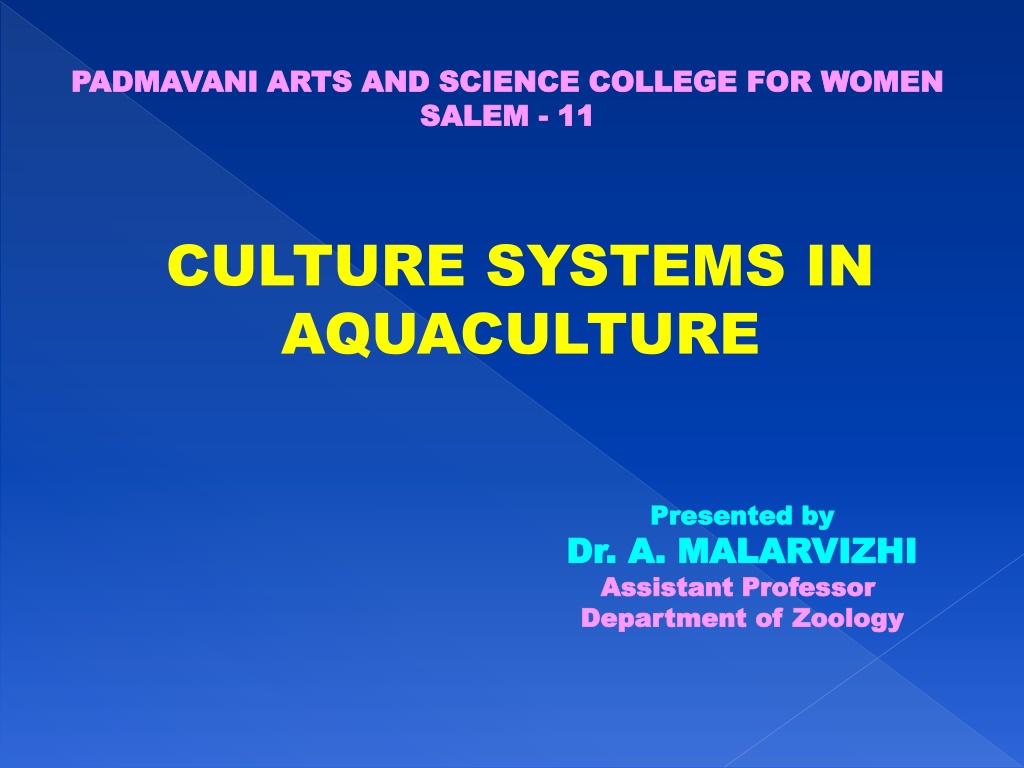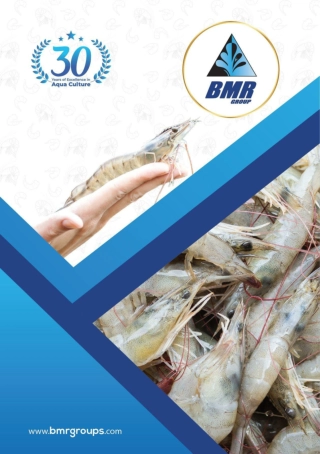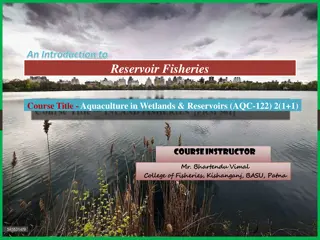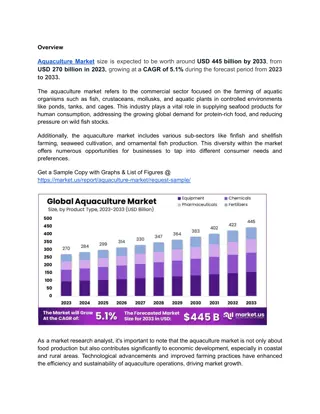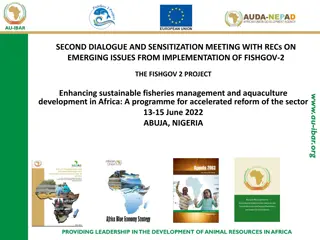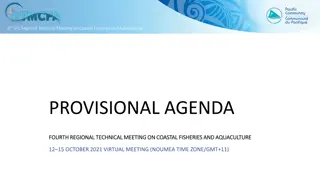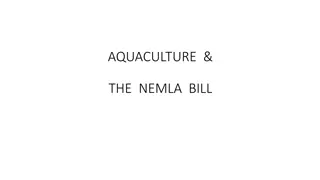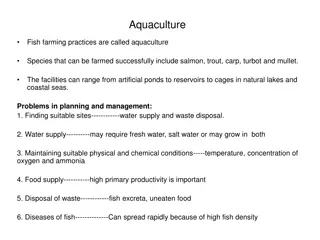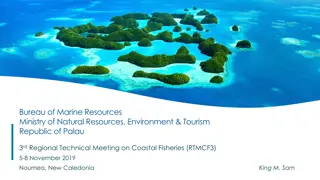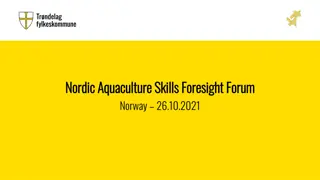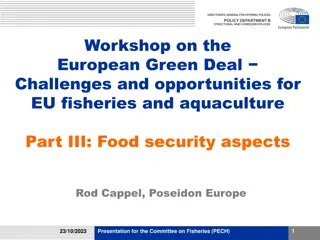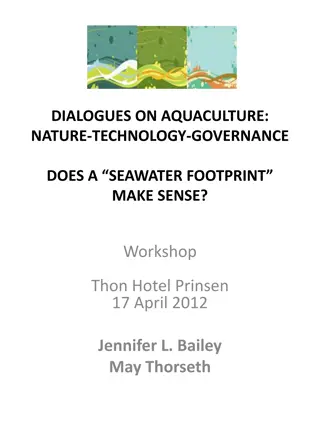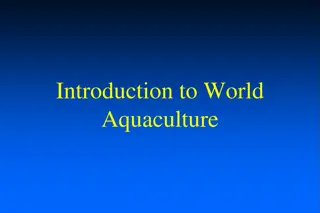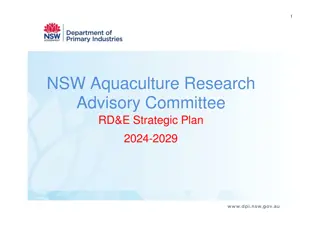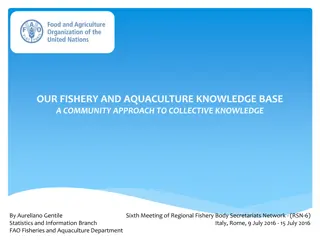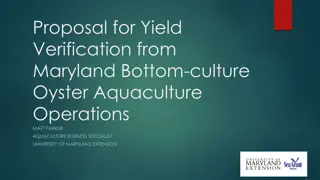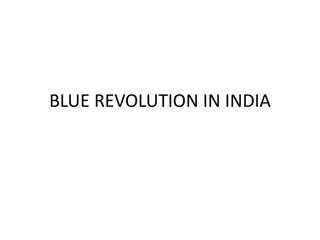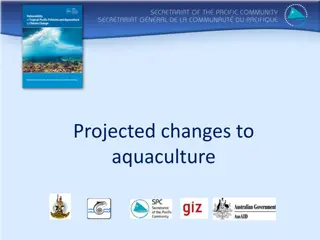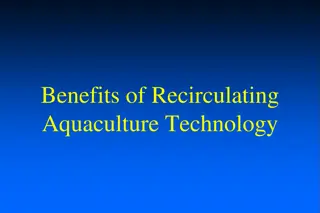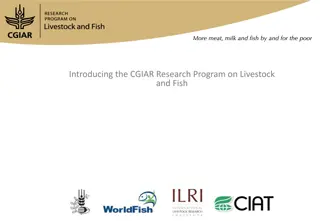CULTURE SYSTEMS IN AQUACULTURE
Aquaculture, the farming of aquatic organisms, involves various culture systems categorized based on habitat, expenses, site, variety, and integration with other organisms. Monoculture, a common practice, focuses on cultivating a single fish species in a controlled environment, offering advantages like easy management and selective harvesting. However, it has drawbacks such as underutilization of natural resources. Understanding these systems is crucial for efficient fish farming practices.
Download Presentation

Please find below an Image/Link to download the presentation.
The content on the website is provided AS IS for your information and personal use only. It may not be sold, licensed, or shared on other websites without obtaining consent from the author.If you encounter any issues during the download, it is possible that the publisher has removed the file from their server.
You are allowed to download the files provided on this website for personal or commercial use, subject to the condition that they are used lawfully. All files are the property of their respective owners.
The content on the website is provided AS IS for your information and personal use only. It may not be sold, licensed, or shared on other websites without obtaining consent from the author.
E N D
Presentation Transcript
PADMAVANI ARTS AND SCIENCE COLLEGE FOR WOMEN PADMAVANI ARTS AND SCIENCE COLLEGE FOR WOMEN SALEM SALEM - - 11 11 CULTURE SYSTEMS IN AQUACULTURE Presented by Presented by Dr. A. MALARVIZHI Dr. A. MALARVIZHI Assistant Professor Assistant Professor Department of Zoology Department of Zoology
Culture Systems Culture Systems Culture fisheries Aquaculture is the culture of aquatic organisms. It is the farming of water. It is an industry and occupation. Types Based on the habitat Based on the habitat - Four types 1. Inland aquaculture (Freshwater aquaculture) 2. Brackishwater aquaculture (Estuarine aquaculture ) 2. Brackishwater aquaculture (Estuarine aquaculture ) 3. Mariculture (Marine aquaculture ) 3. Mariculture (Marine aquaculture ) 4. Methaline aquaculture 4. Methaline aquaculture Based on the expenses Based on the expenses - Three types 1. 1. Extensive culture Extensive culture 2. 2. Intensive culture Intensive culture 3. 3. Semi Semi- -intensive culture intensive culture
Based on the site Based on the site 1. 1. Pond culture Pond culture 2. 2. Reservoir culture Reservoir culture 3. 3. Riverine culture Riverine culture 4. 4. Pokkali culture Pokkali culture 5. 5. Bheri culture Bheri culture 6. 6. Salt Pan culture Salt Pan culture 7. 7. Tank culture Tank culture 8. 8. Raceway culture Raceway culture 9. 9. Cage culture Cage culture 10. 10. Pen culture Pen culture Based on the variety Based on the variety 1. 1. Monoculture Monoculture 2. 2. Polyculture Polyculture 3. 3. Monosexculture Monosexculture
Based on culture with other organisms Integrated aquaculture 1. Paddy cum fish culture 2. Poultry cum fish culture 3. Duck cum fish culture 4. Pig cum fish culture 5. Dairy cum fish culture Based on the climatic conditions 1. Warm water culture 2. Cold water culture Fish culture with sewage water Sewage fed fish culture
Monoculture Monoculture is the culture of single species of fish in a pond or tank. The culture of trout, tilapia, catfish , carps are typical examples of monoculture. Breeding performance of a single species can be easily observed and recorded in a monoculture system. Additionally, it doesn t involve any competition for feed and space among fishes. Monoculture in intensive system is commonly practiced for high value, marketable fish species. It is the only method of culture used in re-circulating system, running water system and in cages wherever the supply of natural food is limited. Categories of monoculture: Freshwater culture Marine water culture Brackish water culture
Advantages of Monoculture : Easy to feeding Permits great control over size, age and sex Easy to operate Selective harvest of marketable fish can be employed Suitable for farmers having limited land resources Disadvantages of Monoculture: 1. Natural productivity of pond is not fully utilized. 2. Available space/ ecological niches in water column are not fully utilized. 3. In case of disease outbreaks greater chances of yield loss are there. 4. Cannibalism may also be possible among fish. 5. More risk of regression in water quality like dissolved oxygen depletion. 6. Due to the dependence of fish species on natural food as in common carp fry, fish growth is affected in case of shortage of natural food.
Cultivable fish species in India: Indigenous species: Catla catla, Labeo rohita, L. calbasu, Cirrihinus mrigala, C.cirrhosa. Exotic carps: Hypothalmicthys molitrix (silver carp), Cyprinus carpio, Ctenopharyngodon idella (grass carp) Characteristics of cultivable fish species: They must possess fast growth rate. They should be able to feed on cheap artificial feed. Hardy fishes should be preferred. They must have high tolerance against adverse physico-chemical water parameters. They should be disease resistant. The fishes should be of good nutritional value. Easy to harvest. They should be prolific breeder.
Polyculture Polyculture is the practice of culturing more than one species of aquatic organism in the same pond. INDIAN MAJOR CARPS Catla ----- surface feeder------feeds on plankton------lives in surface of water Rohu -----Column feeder -----feeds on filamentous algae ------lives in middle zone of pond Mrigal -----bottom feeder -----feeds on detritus and worms----- lives in bottom of pond The stocking density of Catla, Rohu and Mrigal is 3:6:1. It is a species combination of polyculture. Five species or six species combination are followed Five species combination has the following ratio Catla 6 Rohu 3 Mrigal 5 Common carp 4 Cauvery carp 2
Six species combination has the following ratio Catla 3 Rohu 2 Mrigal 4 Silver carp 6 Common carp 4 Grass carp - 1
INTEGRATED FISH FARMING Culture of fishes along with agriculture or animal husbandry or salt industry Eg: Rearing of fishes in paddy fields Rearing of cow near a fish pond ADVANTAGES 1. Single labour, double income 2. No need for artificial feeding 3. No need for additional fertilizer 4. Recycling of wastes 5. Maximum utilization of natural resources 6. No additional cost Agriculture cum fish culture INTEGRATED FISH FARMING Animal husbandry cum fish culture Salt industry cum fish culture
Agriculture cum fish culture Eg. Paddy cum fish culture 1. Synchronous or mixed farming or simultaneous-west bengal 2. Alternate or rotational eg. Kerala- culture of fishes in pokkali fields 3. Relay fish farming extended after harvest Eg. Animal husbandry cum fish culture 1. Poultry cum fish culture 2. Dairy cum fish culture 3. Pig cum fish culture 4. Duck cum fish culture
Countries China rank first Indonesia , India, bangaladesh, vietnam, thailand, philippines, korea, malaysia India west bengal, kerala, maharashtra, karnataka, assam, nagaland, manipurm tripura, meghalaya, arunachal pradesh, etc. Advantages 1. Single labour double income 2. No need for artificial feeding 3. No need for additional feertilizer 4. Recycling of waste 5. Maximum utilization of natural resources 6. No additional cost 7. Weeds are controlled 8. Rice production increased Culturable species Catla, rohu, mrigal, common carp, tilapia, chanos, mugil, clarias, channa, lates, palaemon , penaeus,macrobrachium
Stocking density Hatchlings : 2.5 to 3 million/ha Fry : 0.1 to 0.2 million / ha Fingerlings : 5000 to 6000/ha Catla, rohu and mrigal 3:2:5 Qualities 1. Fast growth, 2. Reach markatable size in 3 months 3. Grow in shallow water 4. Tolerate high temperature 5. Tolerate low dissolved o2 6. Tolerate high turbidity 7. Live in confined water Limitations 1. No pesticides 2. No chemical fertilizers 3. Water flow higher than the normal paddy field
Synchronous or mixed farming or simultaneous-west bengal - Extensive culture - Mugil, cat fish, prawns, lates etc. - Paddy fields are specially prepared - Bundhs are raised and strengthened - Refuges constructed pond or trench serve as shelters during dry field constructed in center or on the slopping end - Pond connected by a number of trenches on the sides - Usually at the periphery (4 corners) interconnected - Sump made at the sloping end helps in draining and harvesting fishes - Inlets and outlets made on bundhs screens- prevent to escape from fields
2. Alternate or rotational eg. Kerala- culture of fishes in pokkali fields -extensive culture -short-term crop harvest in 100 days - One season - Prawn culture - Paddy ---------Monsoon season June to september - After harvest- oct may prawn cultured - Bundhs are raised and sluice repaired after paddy harvest - High tide backwater containing juvenile prawn and fishes enter the pokkali field - Low tide - juvenile prawn and fishes prevented by bamboo screen placed in sluice gate - Incoming water brings nutrients - The decaying straw helps in growth of phytoplankton feed on natural feed and grow - Harvesting- december to may - Fishing is done at night or early morning during low tide in low tide in full moon and new moon days - Catchment 1kg/ha.in six months - Culturable species Penaeus monodon, P. indicus, Metapenaeus dobsoni, M. monoceros, etc.
Integrated Fish cum Cattle Farming Fish farming by using cattle manure has long been practiced in our country. This promotes the fish-cum-cattle integration and is a common model of integration. Cattle farming can save more fertilizers, cut down fish feeds and increase the income from milk. The fish farmer not only earns money but also can supply fish, milk and beef to the market. Pond management practices: Cow dung is used as manure for fish rearing. About 5,000 - 10,000 Kg/ha can be applied in fish pond in installments. After cleaning cow sheds, the waste water with cow dung, urine and unused feed, can be drained to the pond. The cow dung promotes the growth of plankton, which is used as food for fish. Cultivable varieties of cows are black and white (milk), Shorthorn (beef), Simmental (milk and beef), Hereford (beef), Charolai (beef), Jersey (milk and beef) and Qincuan draft (beef).
Duck cum fish farming Duck cum fish farming- This system is very popular and widely practiced in our country particularly in Assam, West Bengal, Bihar, Orissa, Andhra Pradesh, Kerala, Jharkhand and in North Eastern States. It is one of the best livestock fish integration system. Duck droppings directly fall in water or collected and used for fertilization in pond. Fish gather duck droppings as direct food or consume spilled feed. Ducks consume mosquito larvae, tadpoles, dragon fly larvae and snails which also serve as vector for certain parasites. The dabbling habit of ducks increases the available oxygen in pond water. For commercial farming or for maximum profit high egg producing ducks like Khaki Campbell or Indian Runner is preferred instead of local ducks. About 200 to 240 eggs/ duck/ year is expected for commercial farming and on an average 250 ducks/ ha is recommended for duck cum fish farming.
Benefits of fish cum duck farming 1. Water surface of ponds can be put into full utilization by duck raising. 2. Fish ponds provide an excellent environment to ducks which prevent them from infection of parasites. 3. Ducks feed on predators and help the fingerlings to grow. 4. Duck raising in fish ponds reduces the demand for protein to 2 3 % in duck feeds. 5. Duck droppings go directly into water providing essential nutrients to increase the biomass of natural food organisms. 6. The daily waste of duck feed (about 20 30 gm/duck) serves as fish feed in ponds or as manure, resulting in higher fish yield. 7. Manuring is conducted by ducks and homogeneously distributed without any heaping of duck droppings.
8. By virtue of the digging action of ducks in search of benthos, the nutritional elements of soil get diffused in water and promote plankton production. 9. Ducks serve as bio aerators as they swim, play and chase in the pond. This disturbance to the surface of the pond facilitates aeration. 10. The feed efficiency and body weight of ducks increase and the spilt feeds could be utilized by fish. 11. Survival of ducks raised in fish ponds increases by 3.5 % due to the clean environment of fish ponds. 12. Duck droppings and the left over feed of each duck can increase the output of fish to 37.5 Kg/ha. 13. Ducks keep aquatic plants in check. 14. No additional land is required for duckery activities. 15. It results in high production of fish, duck eggs and duck meat in unit time and water area. 16. It ensures high profit through less investment.
Poultry cum fish culture The droppings of poultry is rich in nitrogen and phosphorus and is used as a fertilizer for fish ponds. Poultry house may be constructed above the water level using bamboo poles and the droppings may fertilize the pond directly. The enhancement of meat and egg production in poultry depends upon the breed, variety and strain of the birds, as well as on balanced feeding, health care and good management. The selected birds are kept in pens @ 250 birds/pen, on the floor covered with litter. Dry chopped straw, leaves, hay, ground nut shells, broken maize stalks, saw dust, etc. is used to cover the floor of the pen up to a depth of 15 cm.
The birds are kept on this litter and the droppings gradually combine with the material by bacterial action and form deep litter in about two months, which is a very good fertilizer containing 3 % nitrogen, 2% phosphate and 2% potash. About 500 birds produce enough litter to fertilize one ha of water and poly fish culture. Balanced feed is given to the chicks. Eggs are collected every morning and evening and the birds are sold after 18 months of egg laying. Under the integrated fish -cum-poultry farming, 4,000-4,500 kg fish, more than 70,000 eggs and 1,250 kg chicken meat can be produced from one ha of pond in one year. Chemical fertilizers or supplementary feed for fish are not required. Fully built up deep litter is removed from the poultry pens and stored at a suitable place. It is applied to the pond @ 50 kg/ha/day every morning.
Integrated Fish-cum-Pig Farming: Fish culture is linked with pig husbandry by providing pig-houses on the pond embankment or near the pond so that the waste and excreta is directly drained into pond or carried from the animal house to the pond. The pig dung is a good fertilizer. Fish also feed directly on pig excreta, which contains about 70% digestible food for fish. Thus, the expenditure on fertilizer and artificial feed for fish culture is considerably reduced. Use of pig dung to the pond causes heavy growth of phytoplankton followed by zooplankton and there is considerable increase in detritus at the bottom of the pond. There is growth of macro-vegetation, which serves as food for grass carp, whose semi-digested excreta is used by bottom feeders as food. Hence, polyculture of catla, rohu, mrigala, silver carp, grass carp and common carp gives high yield ranging from 6,000-7,000 kg/ha/yr, along with 4,200-4,500 kg pig meat. Fingerlings are stocked @ 8,000-8,500/ha.
Pig houses can be constructed in a single row facing the pond on the embankment using bamboos. These should be well ventilated with cemented floor. An enclosed run is attached to the pig houses, so that the animals get sufficient air, sunlight, exercise and dunging space. The floor is connected to the pond by a drain. Pigs of good exotic variety should be preferred, as they grow fast and are prolific breeders, attaining maturity in six months. About 30-40 pigs are considered enough for one ha of water area, from which two crops of pigs and one crop of fish can be obtained in one year. Advantages: The fish feed the excreta of pig and their spilled-over food and the pig dung acts as a fertilizer; hence cost of fish production is reduced. Due to abundance of natural food, the growth of fish is very fast. There is no need of extra space for piggery, hence there is high profit with less investment.
Types of Pond for Culture: Several kinds of ponds are required for fish culture, depending upon the function performed by each. These are: 1. Hatching Pits: These are small tanks that are used for hatching of fertilized eggs, and are provided with continuous slow flowing water for aeration. Each tank is usually of 2.5 m x 1.25 m x 0.6 m size. However, small cloth tanks called hapas made of coarse cloth or mosquito curtain cloth (2.0 x 1.0 x 0.50 m) is also used for hatching and is fixed in a larger tank. 2. Spawning Pond: This is a small pond in which brood fish are placed for spawning. Brood fish may also be placed in hapas for spawning. 3. Nursery Pond: These are larger ponds for newly hatched fry. Usually it is 15 x 15 x 1.2 m and is seasonal which dries up during summer. 4. Rearing Pond: These are larger ponds, usually of 30 x 10 x 1.25 m, and are used for rearing advanced fry till they grow into fingerlings. They may be seasonal or perennial and have a gentle slope to facilitate netting of fingerlings.
5. Growing Pond or Stocking Pond: This is a large perennial pond, more than 2 m deep and is used for the growth of fish to marketable size. The size of the pond depends upon the fish species to be cultured. In addition to the above, 2-3 marketing ponds are also constructed in a fish farm. These are used for stocking fish ready for the market. These ponds are arranged in two or more parallel rows, with 1.25 m space separating them. Construction of a Fish Pond: Three kinds of ponds are constructed for fish culture. These are: (i) Ravine pond made by claiming a dry ravine or creek, (ii) Excavated pond is prepared by removing clay from a fairly level area. Excavation is done up to the required depth. Water supply is arranged from a nearby river, canal or well and the inlet is provided with cut off valve and screen, (iii) Levee ponds are constructed without excavation on an agricultural land. A levee pond is like an irrigated rice field, but the pond levee is considerably higher.
Before constructing a fish farm, selection of a suitable site is important. Economy of construction and productivity of the ponds depends largely on its location. The main consideration should be the topography, soil type and source of water. A gently sloping terrain of a valley, or a bowl shaped area with high lands on three sides and a narrow outlet on the fourth, are considered to be ideal for a fish farm, provided the soil is suitable and water supply is available. Such an area can be easily converted into a large pond by constructing an embankment on one side to close the outlet. The soil must be impervious to the water. Rocky and sandy soils should be avoided and silty clay is preferred. If the land has been used for agriculture, soil should be tested for residual pesticides, which are toxic to fish. Soil should be tested by a soil analyst to determine whether or not the soil is capable of holding water, especially during the dry season. Nursery and rearing ponds can be constructed on porous soil, as they are seasonal and are required to hold water for a short period; but for stocking ponds, porous soil should be treated with clay or suitable soil- sealant is spread over the bottom in several layers to make it impervious.
Availability of adequate supply of water is an important consideration. Rivers, lakes or big reservoirs are considered to be the best source of water. Streams, canals and wells are also good and dependable source of water for the ponds. Arrangement should be made for proper drainage. Ponds should be so constructed that each can be drained completely and individually, and water can be replaced with fresh oxygenated water. The drain pipe of the pond should be large enough for quick drainage. The inlet pipe should be 15-20 cm above the water level, and must be provided with a screen to prevent the entry of wild fish. A screen should be placed at the end of the outlet also to check loss of fish. Another factor to be considered is that the pond should be free from overflow or flooding from rain water.
Pen and Cage culture Cage culture is an aquaculture production system where fish are held in floating net pens by using meshes. Intensive method of aquaculture Cage culture of fish utilizes existing water resources but encloses the fish in a cage or basket which allows water to pass freely between the fish and the pond permitting water exchange and waste removal into the surrounding water. Cages are used to culture several types of shell fish and finfish species in fresh, brackish and marine waters. Cages in freshwaters are used for food fish culture and for fry to fingerling rearing. Done in rivers, estuaries, seas Originated in kampuchia 200 yrs ago- used for transport alive form capture area to by trailing cages behind fishing boats Practiced in Kampuchia, Japan, Thailand , India, Indonesia, Norway, Vietnam, Spain, USA
STRUCTURE OF CAGE Square or rectangular, circular, 6sided or 8 sided in shape. Normal size of the cage is 20to 60m3 The smallest cage is 1m3. the largest cage is 10,000m3. Cage consist of nets, frames, floats, sinkers and feeders Net made up of nylon or weld mesh or woven split bamboo The frame is made of wood or iron or PVC pipes.
Advantages its installation is easy. flexibility of management. effective use of fish feeds. less manpower requirement. better control of fish population. in emergencies it can be removed from one place to another. treatment of disease is much simple than that of pond culture.
It requires less investment, because it use existing water bodies, and simple technology and swift return of investment controlling the unwanted reproduction of tilapia, therefore mixed-sex populations can be reared in cages. close observation and sampling of fish is simple and therefore only minimum supervision is needed. many types of water resources can be used, including lakes, reservoirs, ponds and rivers. fish handling and harvesting are very simple and helps to maintain the non-seasonal supply of the fish. Since the cage is meshed, fish inside have less chances of being attacked by predators. They can be used to clean up eutrophicated waters through culture of caged planktivorous species such as silver carp. Disadvantages feed must be nutritionally complete and kept fresh.
Stocked fish simply affected by the external water quality problems eg. low oxygen levels. Diseases are a common problem in cage culture. The crowding in cages promotes stress and allows disease organisms spread rapidly. Also, wild fish around the cage can transmit diseases to the caged fish. caged fish are unable to get the natural food of their choice, whereas it is readily available to the free fish. During feeding a significant amounts of fish feed passes out through the mesh, therefore, fish require feeding many times a day. The high fish density with the high feeding rates, often reduce dissolved oxygen and increase ammonia concentration in and around the cage, especially if there is no water movement through the cage. In public waters, cage culture faces many competing interests and its legal status is not well defined. It is difficult to overwinter warm-water fish in cages. There is usually a high mortality rate because of bacterial and fungal diseases.
THANK YOU THANK YOU
